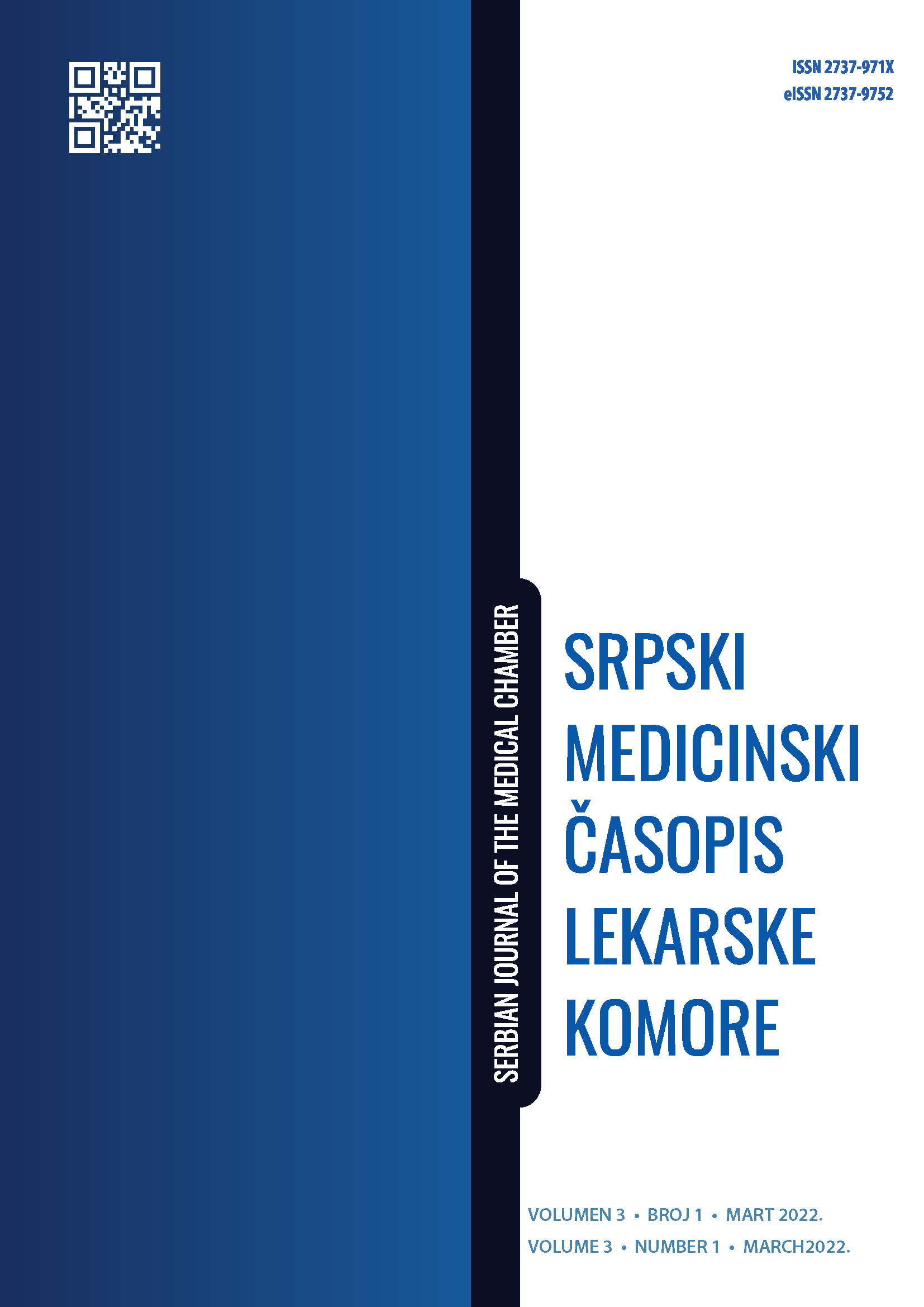PROGNOSTIC RISK FACTORS FOR EARLY DEATH IN PATIENTS WITH ACUTE MYELOID LEUKEMIA
Abstract
Introduction: Early death is a known complication in the treatment of patients suffering from acute myeloid leukemia (AML). It has been defined as death occurring within 28 days of the initiation of induction chemotherapy.
Aim: Determining the clinical characteristics of the patient, the risk factors, the frequency, and the most common causes of early death in AML patients.
Materials and methods: This retrospective study included 248 patients with diagnosed AML. At diagnosis, the following demographic and clinical-laboratory characteristics were recorded: sex, age, general functional status, i.e., performance status according to the ECOG scale, complete blood count, LDH level in the blood, percentage of blasts in peripheral blood and bone marrow, fibrinogen, PT, aPTT, D-dimer, and BMI. Patients were treated with induction and reduction chemotherapy and palliative therapy. Statistical analysis was performed using the data from the discharge summaries taken from the registers of the Clinic for Hematology of the Clinical Center of Serbia.
Results: Early death occurred in 53 (21.4%) patients. The prognostic risk factors for early death were the following: age (p = 0.047), ECOG ≥ 2 (p = 0.001), leukocyte count ≥ 30 x109/l (p = 0.022), LDH level ≥ 450 U/l (p = 0.022), the percentage of blasts in peripheral blood (p = 0.005) and the percentage of blasts in bone marrow (p = 0.003), PT (p < 0.001), as well as the ISTH score (p = 0.018). The most common cause of early death in patients aged 40 – 65 years was sepsis, while in patients older than 65 years it was respiratory failure.
Conclusion: The study showed that age, the leukocyte count, the percentage of peripheral blood and bone marrow blasts, the ECOG score, LDH, PT, and the ISTH score were significant prognostic risk factors of early death in patients with AML, and that the most common cause of early death in patients aged 40 – 65 years was sepsis, while in patients older than 65 years it was respiratory failure.

